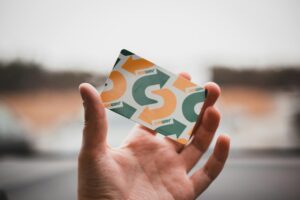The voucher and discount code landscape in the United Kingdom has transformed dramatically since the cost-of-living crisis began. With inflation reaching peaks not seen in decades and household budgets under unprecedented pressure, British consumers have increasingly turned to coupons, discount codes, and promotional offers as essential money-saving tools.
From digital transformation accelerating mobile coupon adoption to the surprising resilience of traditional paper vouchers, the UK coupon market presents unique opportunities for both consumers and retailers. Here’s what the latest data reveals about coupon usage, redemption rates, and consumer behaviour across Britain in 2025.
Editor’s Choice: Top UK Coupon Facts
- Over 90% of British consumers have used a discount code or voucher at some point
- The UK gift card and voucher market is projected to reach £100.4 billion by 2032, growing at 10.51% annually
- 76% of shoppers use digital grocery coupons, with email being the preferred delivery method
- UK consumers are 25% less likely to search for coupons compared to Americans
- Food shopping leads voucher usage at 65% among UK adults
- Discount store spending jumped 41% in 2024 as Brits combat rising costs
- 4 in 5 British adults have joined at least one loyalty programme
- Digital coupons achieve 77% higher redemption rates than traditional paper vouchers
- 33% of grocery shoppers used more coupons in 2024 than the previous year
UK Coupon Market Overview & Digital Transformation
1. The UK Voucher Market Continues Robust Growth Despite Economic Headwinds
Statista, Credence Research
The UK gift card and voucher market is experiencing remarkable expansion, with its value projected to surge from £40.85 billion in 2023 to £100.42 billion by 2032, representing a compound annual growth rate of 10.51%. This growth trajectory significantly outpaces general retail expansion, highlighting the increasing importance of promotional tools in consumer decision-making.
2. Digital Coupon Adoption Accelerates Across All Demographics
DemandSage, Fortunly
The global digital coupon market reached $8.96 billion in 2024, with the UK contributing substantially to this growth. More than 850 million coupons were redeemed worldwide in 2024, marking a significant increase from previous years and demonstrating the sustained appeal of promotional offers.
3. Mobile Couponing Dominates the Digital Landscape
Coupon Follow, Voucherify
By 2025, 80% of all coupon redemptions are projected to happen on mobile devices. Over 90% of Americans who use digital coupons access particular vouchers via smartphones, with UK adoption following similar patterns as mobile commerce continues its upward trajectory.
4. QR Code Redemptions Experience Exponential Growth
Business Wire, Statista
The global mobile coupon market is projected to reach $1.42 trillion in 2024, up from $1.12 trillion in 2023. QR code technology has become particularly popular post-pandemic, offering contactless convenience that appeals to health-conscious British consumers.
UK Consumer Behaviour & Shopping Patterns
5. Food Shopping Leads UK Voucher Usage Categories
VoucherCodes.co.uk
Among UK respondents, 65% use vouchers or discount codes when food shopping, making this the leading category for voucher use. This preference reflects practical budgeting priorities as grocery costs remain a significant household expense.
6. British Shoppers Show More Conservative Coupon Adoption Than Americans
Shopper.com
In the US, 1 in 3 shoppers will look for coupon deals before making a purchase, compared to 1 in 4 in the UK. Additionally, UK consumers search online for coupons less than Americans—53.1% in the UK compared to 59.3% in the US.
7. Gender Differences in UK Coupon Searching Behaviour
Shopper.com
Only 16.6% of male shoppers in the UK look for coupons, compared to 25.2% in the US. For comparison, 40.2% of US and 36.7% of UK female shoppers do the same. This suggests significant opportunity for brands to better engage male consumers with targeted promotional strategies.
8. UK “Super Shoppers” Represent Untapped Market Potential
Shopper.com
There are fewer super shoppers—consumers who use coupons for almost every purchase—among UK consumers: 13.7% compared to 16.3% in the US. These dedicated deal-hunters represent a crucial segment for retention-focused marketing campaigns.
9. Cost-of-Living Crisis Drives Discount Shopping Surge
Nationwide
Discount store spending jumped 41% as Brits offset cost-of-living by bagging bargains. The UK’s Value, Discount, Variety Stores and General Merchandise Retail Market is forecast to grow at a rate of more than four per cent until 2027 as consumers prioritise value.
Digital vs Traditional Coupon Performance
10. Digital Coupons Achieve Superior Redemption Rates
RAVEN5
Traditional wisdom about paper coupons is being challenged by performance data. Digital coupons are 77% more likely to be redeemed than print coupons, while also performing 35% better at attracting new customers. This efficiency advantage makes digital formats increasingly attractive to cost-conscious retailers.
11. Email Remains the Preferred Digital Coupon Delivery Method
Capital One Shopping
45% of American shoppers prefer to receive grocery coupons through email, making it the most popular method. UK consumers show similar preferences, with email marketing continuing to deliver strong engagement rates for promotional content.
12. Average Digital Coupon Redemption Rates Exceed Traditional Expectations
DemandSage
The average redemption rate of a digital coupon is 7% or higher, significantly outperforming historical industry benchmarks. This improved performance reflects better targeting capabilities and reduced friction in the redemption process.
13. Paper Coupons Maintain Surprising Resilience
Valassis
Despite digital dominance, 50% of shoppers still prefer getting their coupons via physical mail. This preference varies significantly by age group, with older demographics showing particular loyalty to traditional formats.
Demographics & Generational Trends
14. Millennial Parents Lead Digital Coupon Adoption
Valassis
93% of millennial parents and 92% of parents use digital coupons. This demographic represents the most engaged segment, combining high digital fluency with practical budgeting needs driven by family expenses.
15. Loyalty Programme Participation Reaches Saturation Levels
Statista
Four in five adults in the UK have joined a loyalty program, indicating near-universal adoption of structured reward systems. The average American shopper belonged to over 16 loyalty programs specifically to save money and get discounts on future purchases.
16. Grocery Store Apps Dominate Mobile Coupon Usage
Valassis
61% of consumers and 80% of shoppers aged 25 to 40 use a grocery or superstore savings app. This preference for retailer-specific applications reflects consumer desire for integrated shopping experiences that combine convenience with savings.
17. Affluent Consumers Actively Seek Discount Opportunities
Valassis
79% of affluent consumers searched for coupons when making shopping plans. This behaviour challenges assumptions about price sensitivity across income brackets, demonstrating that deal-seeking transcends socioeconomic boundaries.
Consumer Psychology & Spending Behaviour
18. Coupon Users Consistently Spend More Than Non-Users
Marketing Initiative Worx
On average, coupon shoppers spend 24% more than regular shoppers. This counter-intuitive finding reflects the psychological “mental budget” expansion that occurs when consumers perceive they’re getting value.
19. Coupons Drive Unplanned Purchase Behaviour
Capital One Shopping
38% of American consumers buy more than they intended when they have a coupon; 67% will make an unplanned purchase because of a coupon. This impulse-driving effect makes promotional tools powerful revenue generators for retailers.
20. Promotional Offers Influence Brand Trial and Loyalty
Multiple Sources
57% of customers made a purchase from a brand not tried before on being offered a coupon. 91% of these individuals purchased from the same retailer again. This data demonstrates coupons’ effectiveness for customer acquisition and retention.
21. Deal Discovery Creates Positive Emotional Responses
Hawk Incentives
40% of shoppers report feeling smart when they find a good coupon deal. This emotional reward reinforces deal-seeking behaviour and contributes to positive brand associations.
Technology Trends & Future Outlook
22. Artificial Intelligence Transforms Coupon Personalisation
Inmar
53% of consumers want coupon deals tailored to their shopping habits, representing a massive increase from previous years. AI-driven personalisation technologies are making hyper-targeted promotional campaigns increasingly feasible.
23. Social Media Platforms Emerge as Coupon Discovery Channels
Fortunly
Meta’s platforms are dominating the space when it comes to coupons, discounts and deals, with Instagram being used by 30% of shoppers and Facebook groups by 18%. Social commerce integration continues expanding coupon distribution opportunities.
24. QR Code Adoption Reaches Mainstream Acceptance
Various Sources
45% of respondents in the USA had used a QR Coupon Code three months leading up to the survey. 59% of respondents believed that QR codes would be a permanent part of the mobile shopping experience in future. UK adoption mirrors these trends as contactless interactions become standard.
25. Chatbots and Invisible Payments Shape Future Coupon Distribution
Juniper Research
64% of Americans prefer chatbots because they serve them 24 hours long. 37% communicate with a chatbot to receive a quick response. These technologies promise to make coupon discovery and redemption even more seamless.
Industry Challenges & Opportunities
26. Consumers Demand Simplified Coupon Experiences
Valassis
More than half of consumers think couponing should be easier. 49% of consumers say they would use coupons more often if the process were more straightforward. This feedback highlights significant opportunities for user experience improvements.
27. Cart Abandonment Reduction Through Strategic Discount Timing
eMarketer
If they see a discount offer in their online shopping cart, 87% of consumers will complete a transaction. This statistic underscores the importance of strategic discount placement in the purchasing funnel.
Key Takeaways for UK Businesses
The UK coupon landscape in 2025 presents compelling opportunities for retailers willing to embrace both digital innovation and traditional customer preferences. While British consumers show more conservative coupon adoption than their American counterparts, they represent an engaged and growing market worth £40+ billion annually.
Strategic recommendations include:
- Prioritise email marketing for coupon distribution, as it remains the preferred channel
- Develop mobile-first experiences to capture the 80% of redemptions happening on smartphones
- Target millennial parents as the most engaged demographic segment
- Simplify redemption processes to address the 49% of consumers wanting easier experiences
- Leverage personalisation technology to meet the 53% demanding tailored offers
- Maintain paper options for the 50% still preferring traditional formats
The data clearly indicates that coupons will continue playing an essential role in UK retail strategy, particularly as cost-of-living pressures maintain consumer focus on value and savings opportunities.
Frequently Asked Questions
What is the average coupon redemption rate in the UK?
Digital coupons have an average redemption rate of 7% or higher, significantly outperforming traditional paper coupons. However, only 0.85% of all coupons issued in 2023 were redeemed when considering the total volume of distributed promotional offers across all channels.
Are coupons effective for UK businesses?
Absolutely. On average, coupon shoppers spend 24% more than regular shoppers, and 57% of customers made a purchase from a brand not tried before when offered a coupon, with 91% purchasing from the same retailer again. Coupons serve as powerful tools for both customer acquisition and revenue growth.
Do UK millennials use coupons?
Yes, extensively. 93% of millennial parents and 88% of millennials in general regularly use coupons, making them the most engaged demographic for promotional offers. They particularly favour digital formats and mobile app-based solutions.
Where do UK consumers find the best coupons?
Official store websites are where 71% of shoppers look for discount deals, followed closely by brand manufacturer sites at 70%. Email marketing remains the preferred delivery method for 45% of consumers, while social media platforms are gaining prominence.
How can businesses get coupons to UK consumers for free?
Most coupons function as marketing tools, making them inherently free for consumers. Businesses should focus on email newsletters, official websites, mobile apps, and social media channels. 61% of consumers use apps developed directly by grocery stores, mass stores, and supercentres for accessing promotional offers.
What coupon platforms are legitimate in the UK?
Look for established platforms with clear expiration dates, organised categories, and transparent terms. Avoid sites requesting excessive personal information. Check user reviews and ensure the platform has a positive reputation among UK consumers before sharing any personal details.
How can UK consumers maximise their coupon savings?
Plan shopping around promotional periods, combine manufacturer coupons with store discounts, use cash-back apps alongside traditional coupons, and sign up for loyalty programmes. 76% of shoppers use digital grocery coupons, and 75% use coupons to decide what goes on their shopping list, demonstrating the importance of strategic planning.

